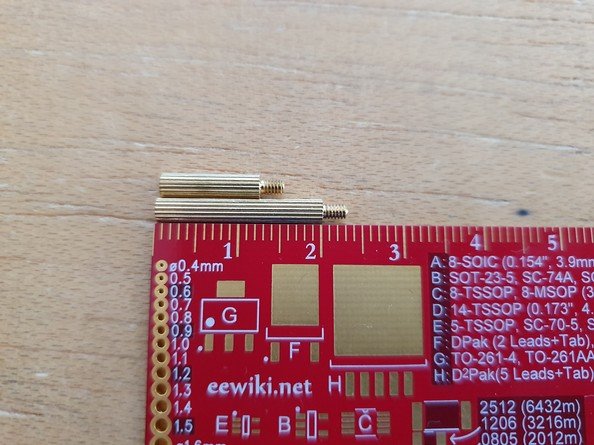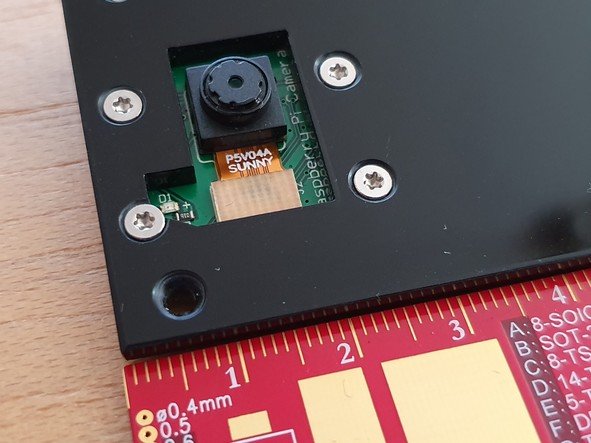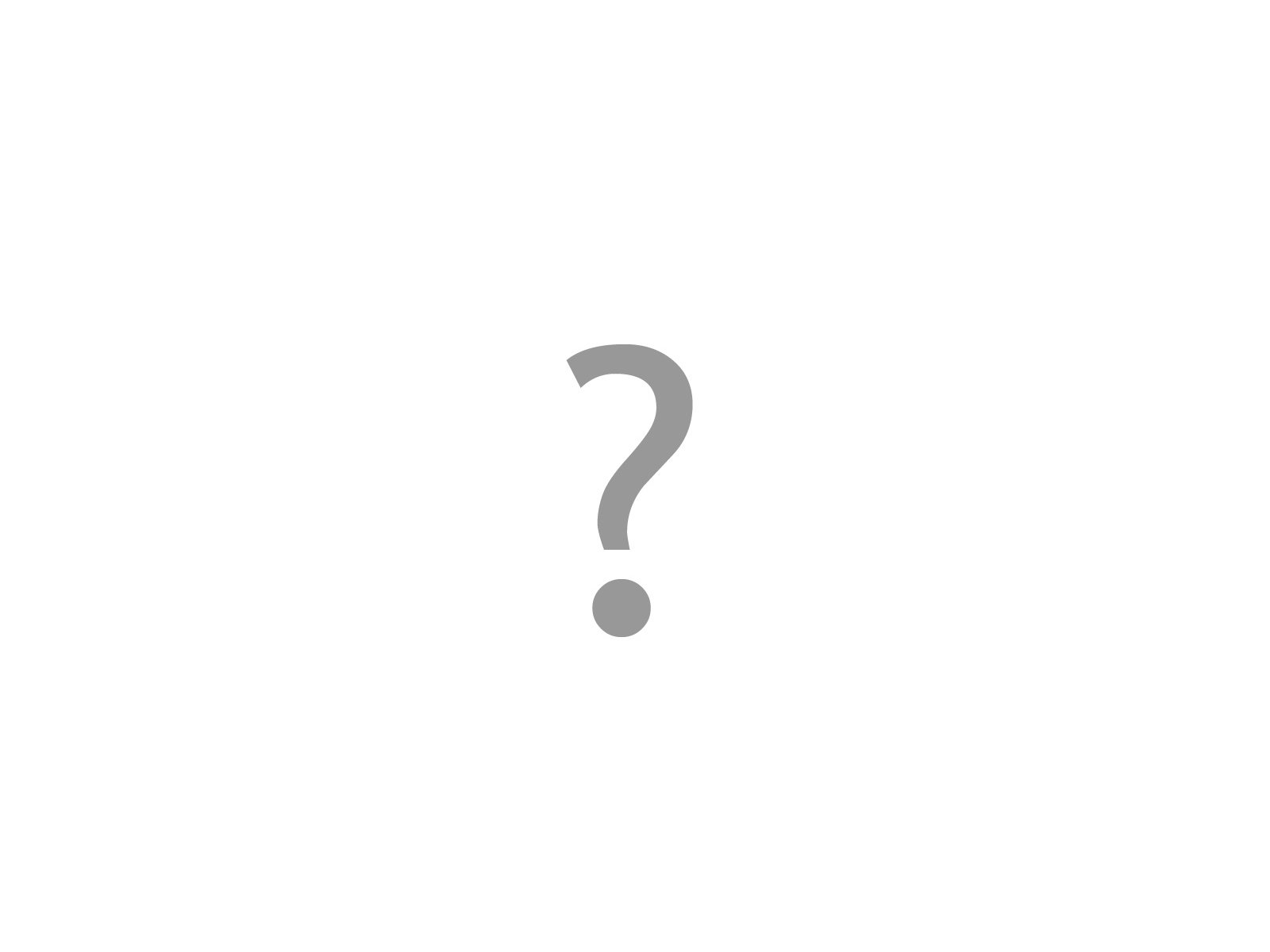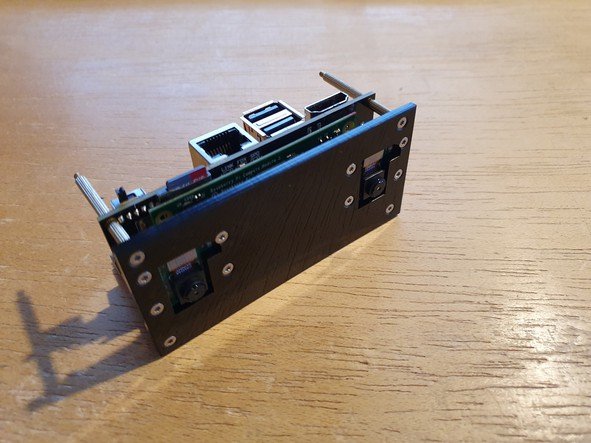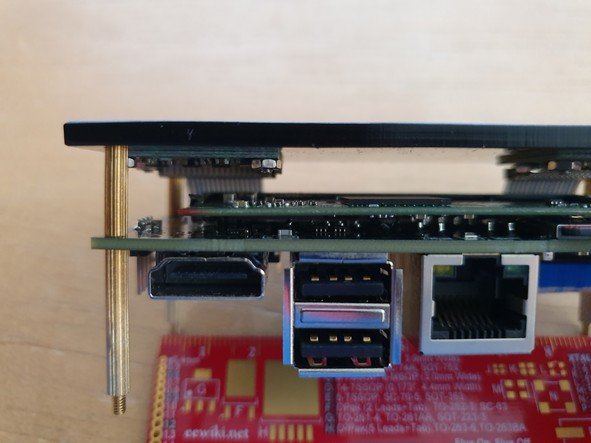After my StereoPi was delivered, I needed a handy solution to get the cameras mounted and the StereoPi connected without fear of damaging the ribbon cables while experimenting. My first thought was to use a standard, generic case and add some high quality glass to get my 3D pictures and videos to an acceptable quality. However, on second thought, and not wanting to wait for a parts order to be delivered, I came up with an easier, cheaper, and faster solution: why not use the mounting plate that came with the StereoPi? Some 2 mm stand-offs, screws, four holes, and the short ribbon cables should do the trick. I couldn’t find any information about the positions of the holes on the PCB, so I measured them with a caliper: 85 x 35 mm. The next step was drilling four 2.1 mm holes in the corners and countersinking all holes. The reason for the latter was that I wanted to use 2 mm countersunk Torx screws, to keep the surface even. The mounting plate is slightly asymmetrical in order not to bend the ribbon cables, so the whole plate must be mounted accordingly:
